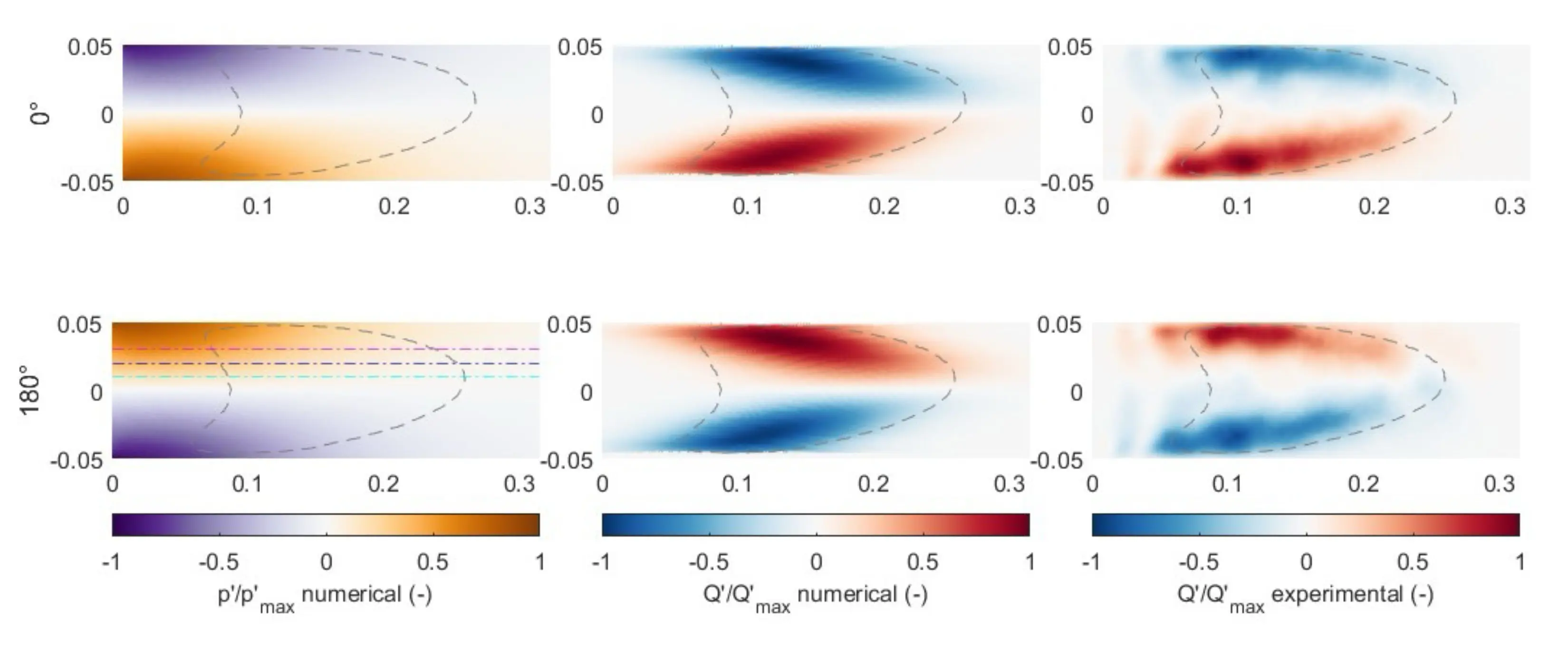Sequential combustion: The key to gas turbines firing 100% hydrogen
To achieve efficient and environmentally friendly power generation, gas turbines firing alternative, carbon-free fuels are a promising asset in the future energy landscape. To combust a variety of different fuels, gas turbines equipped with the sequential-combustion chamber architecture can be used. The dual-chamber setup allows to vary the fuel and air split between the combustion chambers to account for the different reactivities of the fuels. Thermoacoustically stable (quiet) combustion chambers are needed to ensure power generation with a high reliability and low emissions.

Motivated by this, the Institute of Energy Systems and Fluid-Engineering of the ZHAW School of Engineering developed a new method to predict if transverse thermoacoustic instabilities arise under certain operating conditions. Using this new method the IEFE-researchers Mirko Bothien, Simon Heinzmann and Harish Gopalakrishnan investigated a lab-scale combustor as well as the second combustion stage of the Ansaldo Energia GT36 gas turbine. The 3D thermoacoustic analysis was performed for two distinct operating points, loud (unstable) and quiet (stable). Validation was done by comparison to measurement data from experiments.
The analysis shows, that the developed model is very accurate. It can reliably predict when certain instabilities arise due to the coupling between the combustion chamber acoustics and the flame. Consequently, the model can be used in an early design stage to support novel combustion chamber development.
The project FLEX4H2 “Flexibility for Hydrogen” is carried out within the framework of Horizon Europe (GA 101101427).
https://www.zhaw.ch/de/forschung/projekt/73690
Project name:
Flex4H2 - Flexibility for Hydrogen
Participants:
Project leader: Mirko Bothien, ZHAW
Project team: Simon Heinzmann and Harish Gopalakrishnan, ZHAW
Funding partner: Horizon Europe / Project No. 101101427
Project partner: FLEX4H2 Consortium
Duration of the project:
January 2023 till December 2026
Publications:
Trade journal Combustion and Flame: https://doi.org/10.1016/j.combustflame.2025.114010
The ASME publication (GT2025-152879) will be published in summer of 2025.